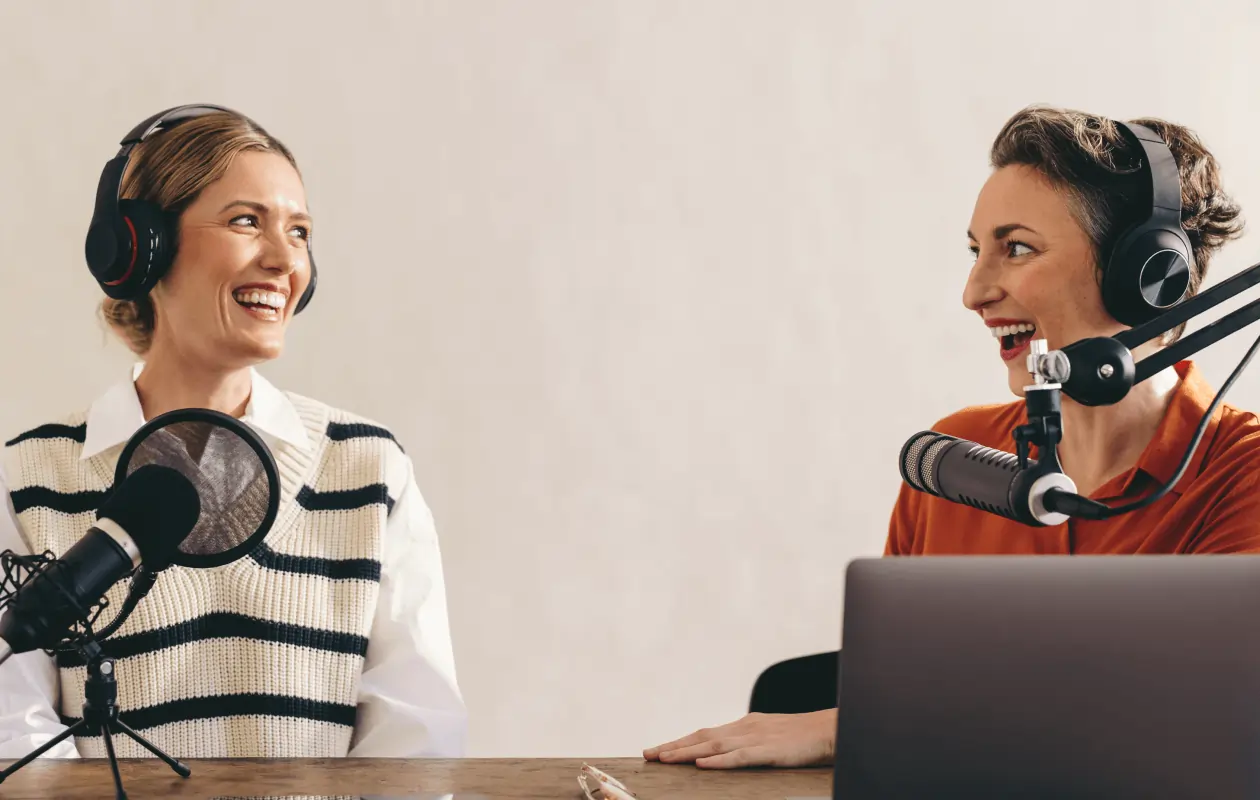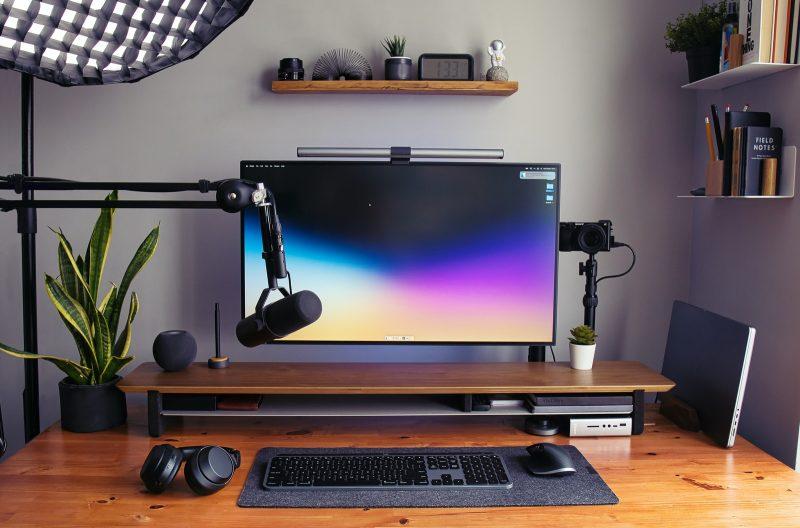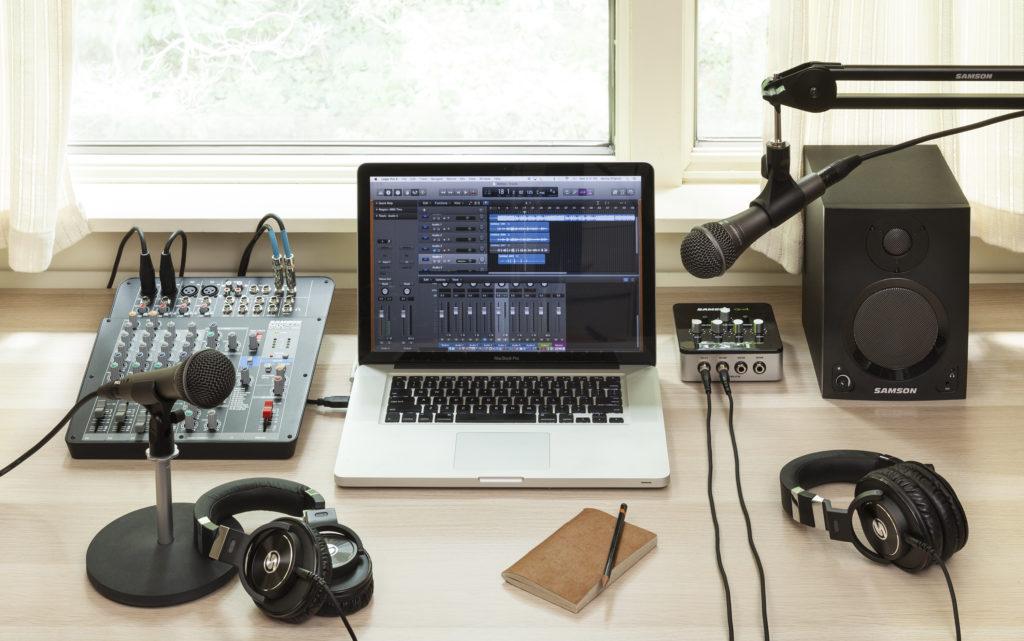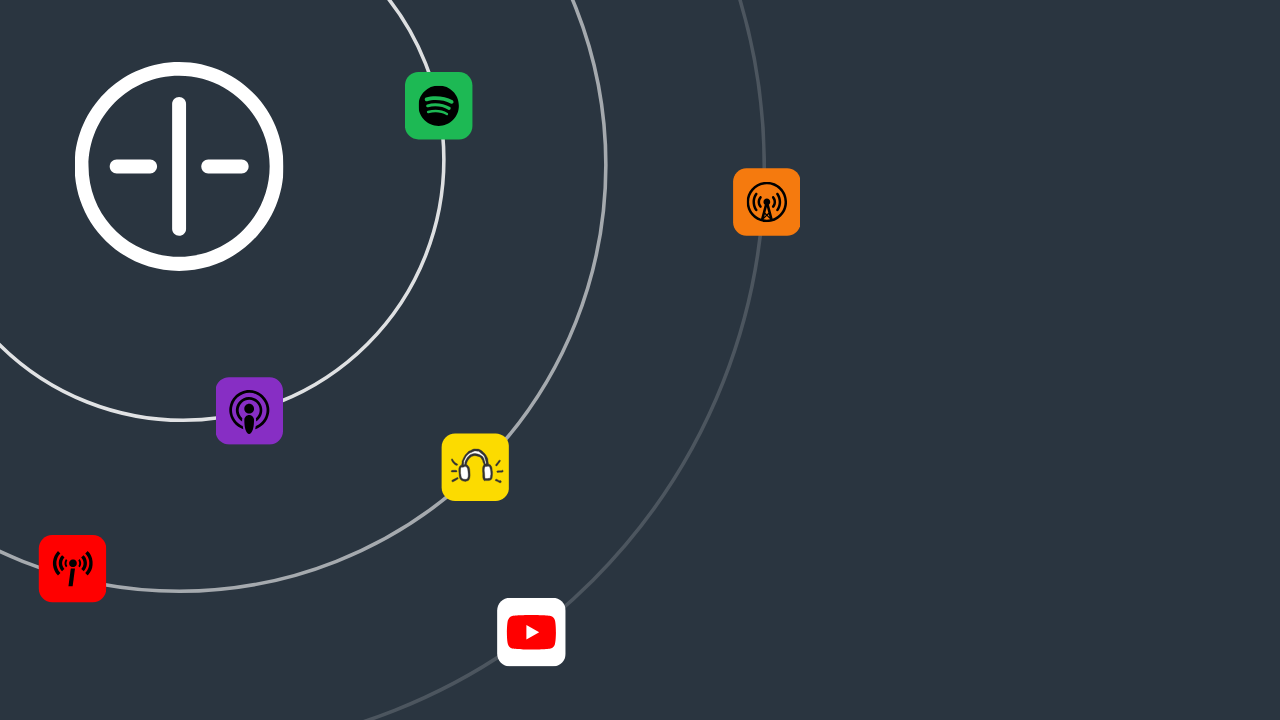Thinking about launching your own podcast but not sure where to begin? You're not alone. From choosing the right tools to recording your first episode, getting started can feel overwhelming. This guide breaks it down step by step, no tech background required. If you're serious about starting a podcast, this is your practical roadmap.
Part 1: Plan Your Podcast Concept and Format
Before you record anything, the most critical step instarting a podcast is to clarify your concept. A strong foundation will help you stand out in an increasingly crowded space.

Define Your Niche and Target Audience
Choosing a specific niche helps you attract a loyal listener base. Instead of going broad, focus on a topic you're passionate about and have knowledge in. Whether it's productivity hacks, startup stories, or wellness for remote workers, your niche should speak to a particular group.
Once you know your niche, define your target audience:
Who are they?
What problems do they have?
What type of content will they find valuable?
This clarity will guide your content, tone, and branding decisions from day one.
Choose a Podcast Format That Suits You
There's no one-size-fits-all structure. Your format will influence your recording process and listener expectations. Some of the most popular podcast formats include:
Solo shows – Ideal for thought leadership or personal storytelling.
Co-hosted shows – Offers natural conversation and shared workload.
Interview-based episodes – Great for bringing in expert insights.
Panel discussions – Useful for exploring different viewpoints on complex topics.
Choose a format that suits your strengths and available resources. If you're camera-shy but love research and storytelling, a solo audio-only podcast may be a better fit than video interviews.
Name Your Podcast and Build an Episode Structure
Pick a podcast name that is unique, searchable, and reflective of your topic. Avoid overly clever wordplay unless it's backed by a clear subtitle or tagline that explains the content.
Then, plan a structure for each episode. A consistent flow keeps listeners engaged. A basic structure may look like:
Intro with music
Hook or teaser
Main content (interview, story, discussion)
Call to action (subscribe, follow, etc.)
Outro music
Set Clear, Achievable Goals
Define what success looks like for your podcast. Are you aiming to educate, entertain, build a community, or generate income? Break large goals into smaller milestones, like releasing your first 5 episodes, gaining your first 100 subscribers, or getting listener feedback.
My Take:
When I first explored how to start a podcast, I was tempted to jump straight into recording. But taking time to plan my format and niche saved me from burnout and confusion later. I chose a co-hosted structure focused on remote work, which matched both my interests and skill set. Trust me, getting clear on your audience and format upfront will save hours of rework later.
Part 2: Prepare the Essential Podcast Equipment
One of the biggest misconceptions about how to start a podcast is that you need a professional studio setup to get going. In reality, many successful shows start with basic, affordable tools; what matters most is audio clarity and content quality.

Must-Have Gear for Beginners
If you're starting a podcast for the first time, you only need a few essentials:
Microphone – A quality USB microphone like the Blue Yeti or Samson Q2U delivers excellent sound without needing extra equipment.
Headphones – Closed-back headphones help monitor your audio and catch issues during editing.
Recording Software – Free tools like Audacity or GarageBand (Mac) are great for beginners. Paid options like Adobe Audition or Descript offer more advanced features if you're ready to invest.
Optional but Helpful Add-Ons
To improve production quality and make editing easier, consider these optional upgrades:
Pop Filter – Softens harsh sounds like "P" and "T," reducing plosives and improving listener comfort.
Audio Interface – If you're using an XLR microphone, an interface like the Focusrite Scarlett connects it to your computer and enhances sound quality.
Boom Arm or Stand – Keeps your microphone steady and at the right distance from your mouth.
Editing Software – Tools like Reaper or Hindenburg are tailored for podcast editing and offer time-saving workflows.
Why Audio Quality Matters
When learning how to create a podcast, it's easy to obsess over content and overlook sound. But here's the truth: listeners will forgive imperfect content, but they won't tolerate poor audio. Clear, crisp sound builds trust and keeps your audience tuned in.
Even if you plan to repurpose your podcast as a video (e.g., how to start a podcast on YouTube), audio clarity remains a top priority.
My Take:
I started podcasting with a $50 mic and a free copy of Audacity. It wasn't flashy, but the results were clear and professional enough to impress early listeners. What mattered more than gear was understanding mic technique, talking consistently, minimizing background noise, and using headphones to catch problems early. Don't wait for the "perfect" gear. Start simple, then upgrade as you grow.
Part 3: Record and Edit Your First Episodes
You've got your concept and equipment, now it's time to actually record your podcast. This is the part many beginners overthink. But here's the truth: you don't need to be a sound engineer to create a great-sounding episode.

Set Up for a Clean Recording
Before hitting the record button, make sure you're in a quiet room with minimal echo or background noise. Carpeted rooms with curtains often work best. Here are a few recording best practices:
Use a script or bullet points to stay on track, but avoid sounding robotic.
Do a short test recording to check for volume levels, background hum, or awkward pacing.
Position the mic about 6–12 inches from your mouth at an angle to reduce plosives.
Even if you're figuring out how to start a podcast for beginners, these habits help you sound more polished from the start.
Choose the Right Recording Software
There are many tools available, some free, some premium. For first-timers, I recommend:
Audacity – A free, open-source tool with all the basics. Great for recording and editing.
GarageBand (Mac users) – User-friendly and perfect for solo or co-hosted shows.
Riverside.fm or Zencastr – Browser-based options are ideal for remote interviews.
All of these tools work well whether you're recording for Spotify, Apple Podcasts, or even looking into how to start a podcast on YouTube.
Edit for Quality and Flow
Editing isn't just about cutting mistakes; it's your chance to shape the listener experience. Start with these simple edits:
Trim silences and filler words ("um," "uh," etc.).
Normalize volume across speakers for consistency.
Remove background noise using filters.
Add intro/outro music for a professional touch.
Don't aim for perfection. Focus on clean, understandable audio that holds attention.
My Take:
My first few recordings were clunky. I over-edited and ended up making my voice sound unnatural. Over time, I learned that simple editing, cutting long pauses, cleaning up audio, and leveling sound, was more important than fancy transitions. Recording in a relaxed, quiet space made a huge difference, especially as I had no audience yet. If you're wondering how to start a podcast with no audience, your first episodes are for building confidence and process, not perfection.
Part 4: Publish and Distribute Your Podcast
Once your first few episodes are recorded and edited, the next big step in learning how to start a podcast is publishing. This is where your content becomes accessible to listeners across platforms like Spotify, Apple Podcasts, and YouTube.

Choose a Podcast Hosting Platform
Your audio files need a place to live before they can be distributed. That's where podcast hosting platforms come in. These services store your episodes, generate an RSS feed, and submit it to major directories.
Popular beginner-friendly options include:
Podbean – Simple interface, free tier available.
Buzzsprout – Clean dashboard, analytics, and easy distribution tools.
Anchor (by Spotify) – Totally free and great for those focused on how to start a podcast for free.
Most platforms offer automatic distribution to Spotify, Apple Podcasts, and Google Podcasts, saving you time.
Submit to Podcast Directories
For maximum reach, you'll want your show to appear on multiple listening platforms. Submitting your RSS feed is typically a one-time process:
Spotify: Visit Spotify for Podcasters and follow the prompts to add your show.
Apple Podcasts: Requires an Apple ID and submission through Apple Podcasts Connect.
YouTube: If you're uploading video podcasts or static-audio episodes, optimize thumbnails and descriptions.
Wondering how to start a podcast on Spotify specifically? Most hosting platforms handle this automatically, but you can also claim and manage your show through Spotify's dashboard.
Optimize Metadata for Discoverability
Metadata includes your:
Podcast title and description
Episode titles
Show notes
Cover art (minimum 1400x1400 pixels)
Good metadata improves SEO and attracts new listeners. Your cover art should be eye-catching, easy to read at thumbnail size, and clearly reflect your podcast's theme.
My Take:
Publishing felt intimidating at first, especially figuring out how and where to submit my podcast. But once I chose a host (I used Buzzsprout), things moved fast. It handled the RSS feed, guided me through distribution, and even helped optimize my metadata. If you're wondering how you can create a podcast that's easy to share, a reliable host takes care of the heavy lifting.
Part 5: Promote Your Podcast and Grow Your Audience
Even the most engaging show won't succeed if no one hears about it. Once you've figured out how to start a podcast, your next challenge is visibility. Promotion is where many beginner podcasters struggle, but with a few consistent strategies, you can steadily grow your listener base.

Share Across Social Media Platforms
Social media is one of the most powerful free tools you have. Create dedicated profiles for your podcast on platforms like Instagram, Twitter (X), LinkedIn, or TikTok, whichever fits your niche. Then:
Share soundbites or audiograms using tools like Headliner.
Tease upcoming episodes with behind-the-scenes content.
Use episode quotes or polls to boost engagement.
If you're starting a podcast for the first time, don't underestimate how far a small, loyal audience can carry your momentum.
Cross-Promote with Other Podcasters
Reach out to other creators in similar niches. Whether through guest appearances, shoutouts, or content swaps, collaboration is a great way to tap into established audiences. This strategy is especially helpful when you're starting a podcast with no audience of your own.
Build a Simple Website
Having a central hub where people can learn more about you and your podcast adds legitimacy. You can host episode show notes, embed players, collect emails, and even repurpose your podcast into blog posts for SEO. Free platforms like Podpage or WordPress make this easy.
Engage With Your Audience
Engagement builds community and keeps people coming back. Ask for feedback, answer listener questions in episodes, or create a newsletter. Responding to comments and emails shows your listeners that their voice matters.
Be Consistent, and Listen
Publishing on a regular schedule (weekly or bi-weekly) helps you build trust. But growth also depends on your ability to adapt. Use podcast analytics to learn which episodes resonate most and evolve your content accordingly.
My Take:
In my early podcasting days, I spent more time editing than promoting, and that was a mistake. Growth didn't start until I made audience engagement a habit. I now share clips on social media, respond to DMs, and adjust topics based on feedback. If you're wondering how to start a podcast to make money, know that building trust with your audience is the first investment that pays off.
Part 6: Enhance Your Podcast with Toolsmart's YouTube to MP3
Once you've started publishing consistently, the next step is content expansion, and one smart strategy many podcasters adopt is repurposing existing content. If you've already uploaded videos to YouTube, you don't have to start from scratch. You can convert them into podcast episodes quickly and easily.
Repurpose YouTube Videos into Podcast Episodes
Many beginner creators looking into how to start a podcast for free already have valuable content sitting on YouTube. Rather than re-recording, you can reuse that material to reach new audiences in audio form.
That's where Toolsmart's YouTube to MP3 comes in.

Why Use Toolsmart's YouTube to MP3
Toolsmart is a fast, reliable, and user-friendly solution for extracting audio from YouTube videos without losing quality. Whether it's a solo vlog, tutorial, or interview, Toolsmart lets you convert your existing video content into high-quality MP3 files that are ready for podcasting.
Key benefits:
Quick conversion – No long waits or complicated steps.
Preserves sound quality – Ideal for content you want to publish directly.
No account required – Just paste your YouTube link and download the file.
Once downloaded, you can clean up the audio in editing software (e.g., Audacity), trim unnecessary sections, add your intro/outro, and publish it just like a regular episode.
This method is especially useful for podcasters exploring how to start a podcast on YouTube and want to maintain content consistency across platforms.
My Take:
I used Toolsmart's YouTube to MP3 when I wanted to test podcasting without recording from scratch. I took one of my older explainer videos, stripped the audio, did some light editing, and published it as an episode. The process took less than 30 minutes. If you're figuring out how to start a podcast script or planning your next episode, this is a smart way to save time and stay productive.
FAQs
Q1: Do I need expensive equipment to record a podcast?
No. A good USB microphone and free software like Audacity are more than enough when you're just starting a podcast. As your show grows, you can gradually upgrade your setup.
Q2: How long should a podcast episode be?
Most podcasts range from 20 to 40 minutes, but there's no fixed rule. The best approach is to keep your episodes as long as they are engaging. Whether it's a short update or a deep-dive interview, value matters more than length.
Q3: Do I need cover art for my podcast?
Yes. Cover art is essential for appearing professional and standing out on platforms like Spotify and Apple Podcasts. It should reflect your brand, be visually clear at thumbnail size, and meet platform specs.
Q4: How often should I release new podcast episodes?
Consistency beats frequency. Whether it's weekly, bi-weekly, or monthly, stick to a schedule that your audience can expect. If you're learning how to start a podcast for beginners, start with a pace you can maintain long-term.
Q5: How can I repurpose my existing YouTube videos into podcast episodes?
Use Toolsmart's YouTube to MP3 to convert video content into high-quality audio files. After conversion, edit the audio for clarity, then publish it as a podcast. This method is efficient and lets you get more value from your existing content.
Summary
Starting a podcast may seem overwhelming at first, but with the right steps, it's entirely manageable, even if you have no audience, no studio, and no prior experience. From planning your concept and choosing the right gear to recording, editing, publishing, and promoting, each phase plays a key role in building a successful show.
Whether you're exploring how to start a podcast on Spotify, wondering how to create a podcast for free, or aiming to start a podcast to make money, consistency and value are your most powerful tools.
Don't overlook the potential of your existing content either. With Toolsmart's YouTube to MP3, you can quickly convert your YouTube videos into professional-sounding podcast episodes. It's a smart way to expand your reach without doubling your effort.
So start simple, stay consistent, and keep refining your voice; your future listeners are waiting.

